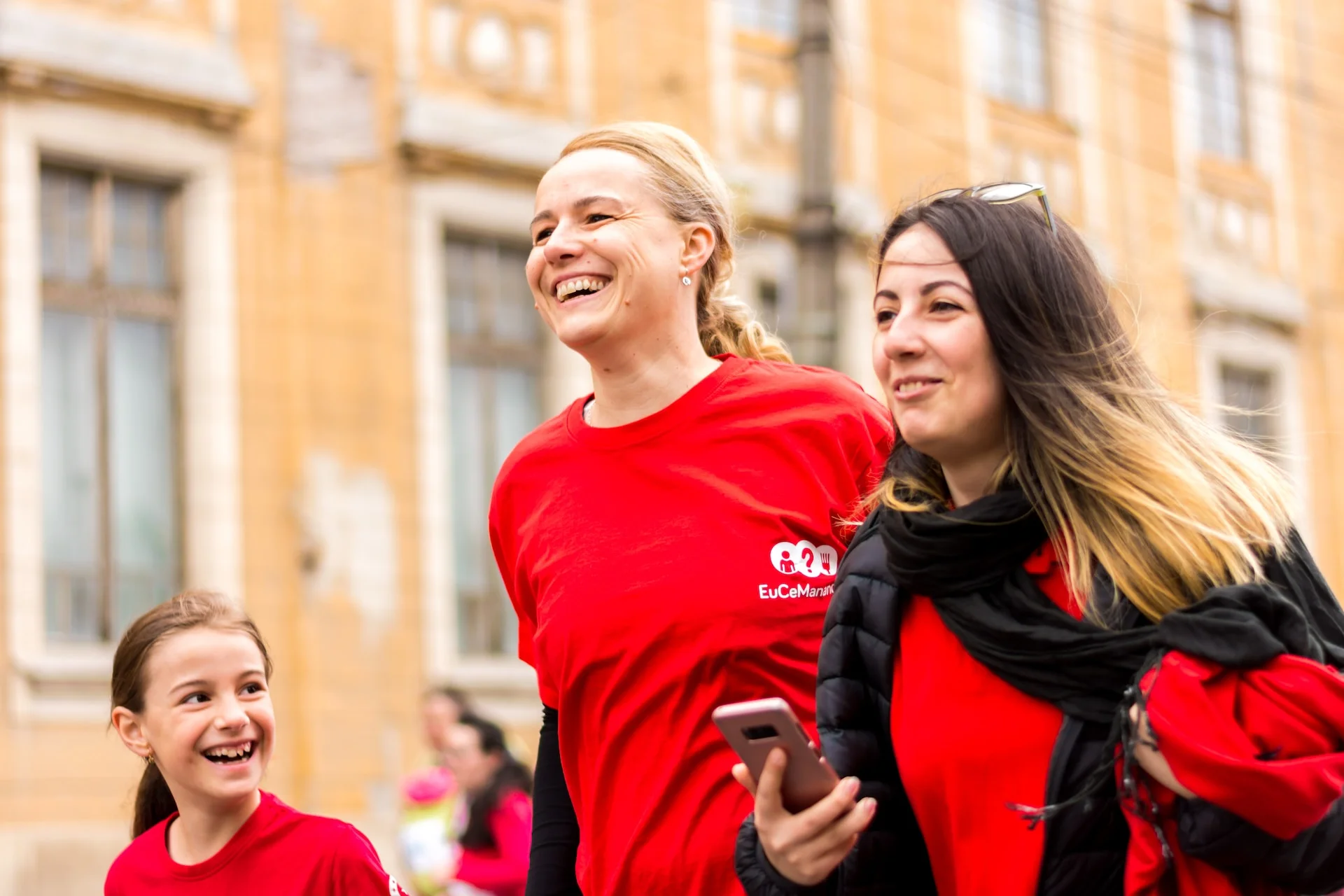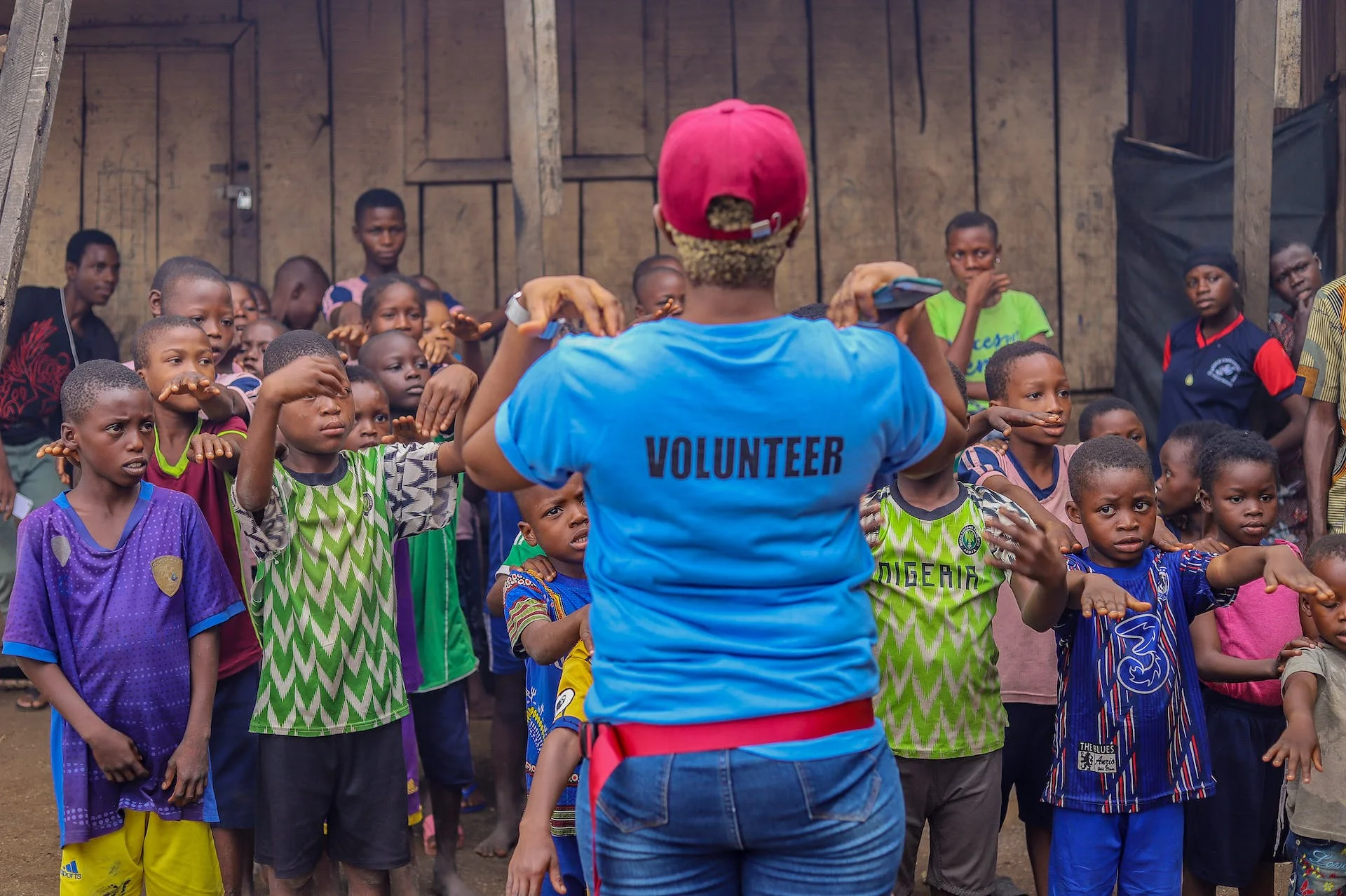Articles
below or do a keyword search on the top right.-

Theme Ideas: Country
This Country theme article forms part of series that explores different themes. This series is designed to save organisers of fundraising events from having to reinvent the wheel all of the time – our primary focus here at the Fundraising Directory! You can see other themes here.
Whether you’re having a fete, a fair or a bush dance, choosing a country theme makes it super easy to keep your event family friendly and fun.
See all things Country on our Pinterest Board.
Invitations
Cow print, cowboy boots and hay bales all feature prominently on invitations. There are many sites that you can download invitation templates from (and sometimes even for free!).
There are also sites that have ‘western’ or ‘country’ style fonts available for download as well. If you’re creating your own design, programs like Canva can be really helpful and are easy to use.
Decorations
Did you know that you can buy ‘country’ themed shower curtains?! Neither did I! but these would make a great entry, backdrop for a photo booth or can just add to the atmosphere.
- Hay bales are a MUST! There are heaps of ways you can use these to decorate and they will also double as some extra seating.
- Timber logs can be used as seating as well.
- Anyone got an old wagon wheel (not the chocolate kind!) lying around? You might be able to pick up a second hand one on eBay or gumtree.
- Same with old cowboy boots. Check out second hand stores.
- Got an outdoor event? How about some easy hula hoop chandeliers using fairy lights?
- You can make your own rope letters with glue, corn flour, water and some rope. This can get a bit messy but will look great. Use coloured rope for more stand out signage.
- Bandanas can be used for table decorations or you can tie them together to make bunting.
- Cow print balloons
- A saddle on a hay bale can look great
Costumes
This would probably be one of the easiest themes to put costumes together for! Cowboy hat, check shirt, bandana, jeans and cowboy boots (if you’ve got them) and you’re done. But if you want to get a bit more creative than that, here’s a few ideas:
- Bush ranger
- Lumber jack
- Shearer
- Farmer
- Scarecrow
- Cow, horse or any kind of farm animal
- Gold miner
- Saloon girl
- Saloon bar tender
- Woody and Jessie from Toy Story
- A cactus
- A chili pepper
- Rodeo clown
And if you think you will have people that show up with no costume, set up a ‘costume bar’ with some straw cowboy hats from a cheap shop and some bandanas.
Filler games
- Country Karaoke
- Sack race
- Hobby horse race / steeple chase
- Ring toss – Paint your bottles black and white cow style or throw rings on a cactus cut out.
- DIY a basic wooden horse to use for a lasso game
- Source some old horse shoes and set up a game of ‘horse shoes’
- Tin can toss
- Snake in the hole – cut holes in a piece of cardboard or ply. The idea is the get a rubber snake in the hole. Each hole is worth different points and the most points wins.
Catering
- Hot dogs and fries (with the option of cheesy fries)
- Hamburgers
- Ice tea and home made lemonade in big glass drink dispensers with taps
- Scones with jam and cream
- Lamingtons
- Candy bar
- Chili bar
- Corn on the cob
- Get your slow cookers out and make some pulled pork sliders
- Don’t forget a side of ‘slaw and some baked potatoes
- Create and name your own country themed cocktail
Music/Entertainment
- You can adapt the teacher in jail fundraiser to suit your event and make some extra cash while you’re at it!
- There are a whole range of different styles of photo booths you can set up. The easiest version only involves purchasing some props. These can be bought online or if you’ve got someone creative in your team, maybe they could make one for you. Make it an ‘old time’ photo booth and have the photos produced with a sepia filter to make them look old.
- Bush band. They are surprisingly popular so you might need to book them early.
- Cake competition. Nominate a few different categories eg. Fruit cake, lamingtons, scones, mud cake, apple pie etc … Your judges can pick the best (and/or worst?) in each category.
- Mini side show alley – laughing clowns, face painting, animal farm, craft making, maybe even a dunk tank if you can find a willing volunteer!
- Chilli cook off
- Fire pit (if appropriate) with ingredients for making s’mores
So round your community up and get them along to your hoe-down for a bucking good time!

Guide to Getting Funding for Your Festival
A big part of your festival planning effort is going to be geared towards getting funding for your festival. You can help ensure you raise enough money by incorporating one or more of the following three proven strategies.
Community Donations
A common way to get funding for your festival is to obtain donations from your community. These can be monetary donations or in-kind donations (i.e. donations in return for advertising). A local butcher, for example, may not be in a position to give you money but could donate sausages for your BBQ instead. This is still wonderful support as it means that you will not have to outlay money for the sausages and thus will increase your profit. You can also seek help from bakeries, supermarkets, fruit and vegetable suppliers and cafes/restaurants to see if they can donate any items.
Corporate Sponsorship
Corporations are always looking for ways to connect with their customers in the communities where their products and services are available. In fact, many corporations have a budget for donating to charitable events including festivals. The best way to attract corporate sponsors to your festival is to do your homework and prepare a sponsorship letter and detailed sponsorship proposal outlining the specific benefits the company will receive in return for their sponsorship such as signage, booth location, ad placement, exposure before the day/on the day etc. In addition, they will want to know visitor demographics and the amount of traffic you expect to receive at your event.
Government Grants
Obtaining a government grant for your festival is easier than you think. Many national and local governments around the world have funding available for festivals. For example, Festivals Australia and the Regional Arts Fund are government programs that provide funding for arts related festivals throughout Australia. In addition, GrantConnect is an online service provided by the Australian Government that can help you find available grants for your community project. Additionally, it is always a good idea to check with your local member to find out about council grants that may be available. In order to receive grants, you will need to make sure that your festival meets the qualifications and complete the application. You need to keep in mind that while this is a relatively easy process, it is not immediate and absolute. Therefore, be prepared to plan as much as a year in advance and stay in close contact with the government agency.
+ Grants Space
‘Grants Space’ is a proud collaboration with Grant’d – Impact storytellers and experts in grants management and strategy.
It has been created to help save volunteers from reinventing the wheel! Sign up to our newsletter to make sure you are on top of new grants that come out.

How to Run an Outdoor Movie Night
Outdoor movie nights in Australia bring back nostalgic memories of warm evenings, enjoying popcorn and lounging on beanbags while watching a great movie under the stars with your family. Hosting such an event requires some planning, but it can also be a fantastic way to make a profit. Here are some tips to ensure a successful outdoor movie night:
Before the Event:
- Choose a suitable date: Consider the expected weather, sunset times, and other events happening in the area, such as sports carnivals or major football games. Starting the outdoor movie 15-30 minutes after sunset is recommended.
- Plan for wet weather: Have a contingency plan in case of rain. Decide whether you will cancel, postpone, or relocate the event to an alternative location.
- Obtain necessary approvals: Contact your local council to determine what permissions and permits you need. Check if you require a liquor or food license, electrical sign-off, or assistance with road closures and parking.
Choosing a Location:
- Opt for a suitable location: School ovals are often the preferred choice due to their size, flatness, grassy areas, and accessibility. For mid-winter movie nights, semi- or fully enclosed undercover areas work well.
- Consider facilities: Ensure there is easy access to toilets. If school toilets are open, address any security or safety concerns. If you’re advertising to the wider community, assess the availability of sufficient parking.
- Be mindful of noise: Take into account nearby residential areas and try to minimise disturbances, especially when people are returning to their cars after the event.
- Arrange for appropriate lighting: Ensure adequate lighting for when attendees are leaving and heading back to their vehicles.
- Determine power sources: Assess where the power will come from and whether you need generators or extension cords.
- Provide access to water: If you plan to have food stalls, ensure there is water access for their needs.
- Manage waste: Set up sufficient rubbish and recycling bins to maintain cleanliness during and after the event.
- Organise seating area: If you require ticketing, consider roping off the seating area and allowing only ticket holders access.
Sourcing a Movie and Screen:
- Seek professional assistance: Unless you have experts in sound and movie technology within your school community, it’s advisable to hire a professional company to handle the screen, projector, and sound systems.
- Make sure you have the necessary licenses for public performance – get in touch with Roadshow Public Performance Licencing for help.
- Choose the right screen size: Select a screen size that matches your expected audience. A small screen (4m x 2m) is suitable for groups of up to 100 people, while larger crowds of up to 1,000 will require a much larger screen (12m x 8m) which may be costlier.
- Consider costs: Prices for screen hire can vary significantly, but as a rough estimate, a small screen suitable for up to 200 people might cost around $500.
Costs and Ticketing:
- Plan ticket pricing: If the event is a fundraiser, consider offering slightly cheaper movie tickets to attract a larger audience. You can supplement the revenue through additional fundraising activities conducted concurrently with the movie screening.
- Calculate all expenses: Ensure your ticket prices cover all costs, including screen and movie hire, permit fees, equipment rentals (e.g., generator, bouncy castle), printing, and marketing expenses.
- Consider bundled packages: Offering packages that include a movie ticket, a drink or ice cream voucher, glow sticks, and a raffle ticket can be perceived as good value by customers. It also reduces the need for handling extra money and prevents over-ordering.
Concurrent Events and Activities:
- Arrange pre-show entertainment: Consider hosting activities like karaoke, bouncy castles, raffles, side-show games, music or dance recitals, and craft tables to engage attendees before the movie starts.
- Decide on food and drink options: Determine whether you will have food and drink stalls or if it will be a BYO (bring your own) arrangement.
- Offer additional items for sale: Consider selling glow sticks, popcorn, tattoos, or other things that can enhance the movie-going experience.
- Explore advertising opportunities: Sell advertising space on the screen, tickets, or in printed programs to local businesses in exchange for sponsorship.
- Create a premium experience: Introduce a “Gold Class” or VIP area with comfortable seating, such as beanbags and cushions, along with a hamper pack containing luxury chocolates, gourmet food, drinks, and other goodies.
- Add decorative touches: Consider decorating the movie night venue with glow sticks or fairy lights to create an enchanting ambience.
Things to Remember:
- Coordinate with the school gardener or council: Ensure that sprinklers or reticulation systems won’t unexpectedly turn on during the event.
- Prepare the venue: Make sure the grass is mowed a week before the event to minimise mess from clippings and reduce allergy risks.
- Establish an emergency and evacuation plan: Have a clear plan in place, including designated muster points and accessible contact persons reachable via mobile phone at all times. Keep local police and council phone numbers easily accessible.
- Market the event in advance: To maximise attendance, use various marketing strategies such as paid advertising in local papers, signs on community boards, letter drops in the neighbourhood, giant posters outside the school, or enlisting local businesses to sell tickets on your behalf. Ensure tickets are numbered, and be aware of your night’s maximum capacity.
- Communicate seating requirements: Inform attendees about the seating arrangements, whether they should bring beanbags, cushions, low camp chairs, or if provisions will be made for those who cannot sit on the ground.

How to Run a Car Boot Sale
A car boot sale is a type of second-hand market where sellers drive into the market area, open their boot, and perhaps lay out a rug or table to sell various items. With a bit of organising, it makes an exciting and easy fundraiser for schools, clubs, and community group.
Why a car boot sale is easier than a second-hand stall
Everyone loves a bargain and whether you call it Trash’n’Treasure, a second-hand stall or a white elephant stall, many great items are often found at cheap prices.
How a car boot sale differs from a typical second-hand stall, is that you do not call for donations in advance of the event, meaning much time and energy is saved by not having to sort and cull donations. Instead, each seller takes responsibility for their own items – they need to sort and store them, they do the pricing, and they are responsible for taking home anything left unsold. They also get to keep all money made from their own sales.
How to make money from a car boot sale
There are different ways for your group to make money from a car boot sale:
- Charge each seller a fixed price for attending the sale ($10-$20 per car)
- Charge customers who visit the sale (ie a gold coin donation)
- Seek sponsorship from local businesses to cover the costs of signage, food stalls or even to hire a bouncy castle for kids to play on while their parents shop. You may also be able to get some donations from businesses to raffle on the day.
- Run concurrent fundraisers such as selling food, drink and raffles.
- With the national ban on single-use plastic bags, you might also consider designing and selling shopping totes as an extra fundraiser.
If a school has access to a car park or oval where they can safely park 100 cars, that would be $1,000 profit before you take into account any extra food/raffle sales.
When and where to run your sale
The primary consideration is having ample space for the cars. If you have access to a carpark this is the best option, as the bays are clearly marked and the surface is safe for lots of cars and traffic.
The next option is an oval – however you will need to plan and mark bays for each car, and will probably need parking attendants to make sure cars park correctly.
Weather in the next consideration – it’s best to avoid the wettest and hottest months. However, if you plan the event properly and give sufficient warning, sellers might be able to bring their items inside if you have access to a hall or undercover area.
Safety considerations
Plan your event so that all the sellers/cars have arrived and parked before customers are allowed in.
Similarly, make sure customers know when the event is finishing, and clear everyone away before the cars are allowed to leave. Make it a condition of entry that cars know they are not allowed to attempt to leave before the end of the event. You can’t have cars driving away with customers milling around, even if they have already sold all of their goods.
If you are worried about professional dealers coming in early and making aggressive low-ball offers to your sellers, make sure you have some competent and confident volunteers on hand to help manage or diffuse any situation. Make sure you stick to your opening time for buyers, so sellers have a chance to unpack and set-up in peace before buyers start picking over their goods.
Volunteers required
In advance of the event you will need a small team of people to plan the logistics of the day (permits, a parking plan, marketing, sponsorship, food/drinks, rides, financials). Keep in mind that once you have run this event once, you have the plan in place to repeat every year as an annual event. It will get easier each time if you keep a good handover record.
Set up a page for selling car bays via an online ticketing service in advance of the event.
Write a document that all sellers will receive which outlines what they can/can’t sell and how much space they can have outside of their car boot. Remind them they are also responsible for organising their own float/change.
On the day of the sale you will need volunteers to direct sellers to their bays. You will know in advance if you have sold all your bays and if everyone just needs to squeeze in next to each other, or if there is space between sellers. If using an oval, make sure you allow space for foot traffic between rows of cars. Planning your parking strategy is probably the most important component – you want to be able to get the sellers’ cars in and out as quickly and painlessly as possible.
You will also need volunteers to be stationed at the entrances and collect any fees from customers.
Volunteers will also be required to run any food stalls and rides, and perhaps roaming raffle ticket sellers. People will be needed at the end of the event to assist cars to leave in a safe and timely fashion and to pick up any rubbish at the conclusion of the event.
Promoting Your Event
Promotion is a crucial part of ensuring a successful car boot sale. As mentioned earlier, use local community boards and social media to spread the word, but also consider printing posters and flyers to be distributed in your area. Contact local radio stations and newspapers to see if they will cover your event as part of a community service announcement. If your sale is for a charitable cause, be sure to include that in your promotional materials as it might entice more people to attend.
Accessibility
Your car boot sale should be accessible to everyone. Think about people with disabilities and families with strollers. Make sure pathways are wide and clear, and provide a designated area for people with disabilities to park.
Sustainability
Encourage sustainable practices at your car boot sale. As mentioned, selling reusable shopping bags can be a great idea, but also consider setting up recycling stations for packaging and food waste. Encourage sellers to think about the packaging they use for their goods and ask food vendors to use biodegradable or recyclable packaging.
Food and Entertainment
Having food stalls, drinks, and entertainment can make the day more enjoyable for attendees. This can also serve as an additional source of fundraising. Aside from the mentioned sausage sizzles and bacon and egg rolls, you can also sell homemade baked goods, sandwiches, and drinks like lemonade or iced tea.
Entertainment is not only about bouncy castles or rides for children. You might want to consider inviting local musicians or performers for a live performance. This will not only entertain the attendees but will also promote local talent.
Other considerations




- Check with the local council to determine if you require a permit for the sale itself or if you plan on selling food, especially if you have hired a public area to hold the event.
- If you are a school/P&C, make sure your indemnity insurance covers the event.
- You can open the event up to people beyond your own school/club community. Advertise the sale on local area Facebook pages, community boards and for a few dollars you can run an advert in the classifieds of your local paper. People may consider bringing their goods to your car boot sale rather than holding their own garage sale at home.
- Will your event be within walking distance of an ATM? For larger events you may want to consider hiring one (the cost can be passed onto sellers).
- If you are having an early morning event, consider hiring a coffee van who will donate some of their proceeds to your fundraising cause. Sausage sizzles and bacon and eggs rolls are also very popular morning snacks.
- Make sure you advertise your event well in advance.
- Will your customers and sellers have access to toilets during the event?
Cleaning Up
Plan for clean up afterwards. Have plenty of bins available for waste, and assign volunteers to clean up duty to make sure the site is left as it was found.
Finally, after the event, take the time to debrief with your team. Discuss what worked well and what could be improved. This feedback will be invaluable for planning future car boot sales or other events.

Just One Thing Letter to Volunteers
Here is the now-famous ‘Just One Thing’ letter originally sent in by a volunteer in the Fundraising Directory family. We since learned that it is likely to have been first created by the ever-fabulous Carmel Nash from the Queensland P&F Association. Well done Carmel!!!
The ‘Just One Thing’ Letter encourages families in your community to do their ‘one thing’, and provides a comprehensive list to offer choice as to what that contribution might be. Great idea, and you are free to take it and customise it for your own purposes.
A downloadable/ editable version of this document lives within our VIP Portal for you to freely use, so click here to join
“Just One Thing”
Dear Parents, Guardians and Friends
You are invited to participate in our “Just One Thing” campaign for [INSERT YEAR HERE]. We hope to build on the success we had in [INSERT LAST YEAR], and give all (school name) families a chance to be involved in our school community. We would especially encourage families which are new to the area to get involved. Volunteering at the College is a great way to meet people and make friends.
We have over XXX families attending (school name), over 100 of them new to the College this year, and we would be grateful if every family would nominate to do “just one thing” throughout the year. Apart from building up our community, a successful campaign will make a significant contribution to our College’s financial position, and help to keep our school fees as low as possible.
Below and on the next page is a list of “Things” that we would appreciate your assistance with. Please tick just one box (or more if you wish) and place your contact details at the bottom of the page. Please return to the office as soon as possible, so that we can collate the responses, and when the time comes someone from the school or P&F will be in contact with you regarding your participation.
Last year’s list will not be carried over, so please fill in this form if you are available to help, even if you filled in a form last year.
Yours Sincerely,
President – Parents and Friends Association College Principal
COMMITTEES, MEETINGS AND BOARDS
- Attend Parents and Friends Meetings (2nd Tues of the month, 7pm, Library)
- Attend School Board Meetings (fourth Tuesday of the month, 7:00pm-8:30pm)
- Attend Finance Committee Meetings (once per term 5:30pm-6:30pm)
HELPING AROUND THE SCHOOL
Library
- Assist with the annual book fair
Tuckshop
- Help in the Tuckshop
- Participate in Cake Roster
Vocational program
- I can offer a student work experience
- I can offer a student school-based training
Classrooms
- I have a skill, hobby or interest that I can share with classes as part of their Integrated Curriculum or Pastoral Care units
Sports and Swimming Days
- Assist with Sporting Carnivals and Activities
Improving our Grounds
- Participate in a working bee – usually conducted once per year on a Saturday morning
- Participate in special projects such as paving, tree planting, etc. (assisting groundsmen)
School Events
- Help cook BBQ Help serve soft drinks, chips, tea, coffee etc.
FUNDRAISING ACTIVITIES
Fundraising /Social Committee
- Help investigate and organise new fundraising opportunities and social events.
Spring Fair
Held in October – our major fundraiser and a great community event (we have a fair convenor)
- Class parent representative to work with the teacher to organise a class stall. Class_____________
- Member of Spring Fair Organising Committee
- Assist in the organisation of a stall at the Spring Fair (working with Spring Fair Convenor)
Dodgers
A monster raffle with over 35 prizes run in conjunction with the Spring Fair
- Dodger Coordinator – responsible for the organisation of the raffle, prizes etc
- Member of Dodger Committee – assist with ticket issue, counting of monies etc
Chocolate Drive
- Chocolate Drive Coordinator
- Assist with issuing and collecting chocolates, counting of monies etc
General Fundraising Activities
- Assist with the organisation of raffles (Easter, Mothers’ Day, Fathers’ Day, Christmas)
- Member of Race Day Organising Committee
- Member of Quiz Night Organising Committee
- Member of the Mother’s Day Craft Stall Committee (help make crafts and sell on the day)

